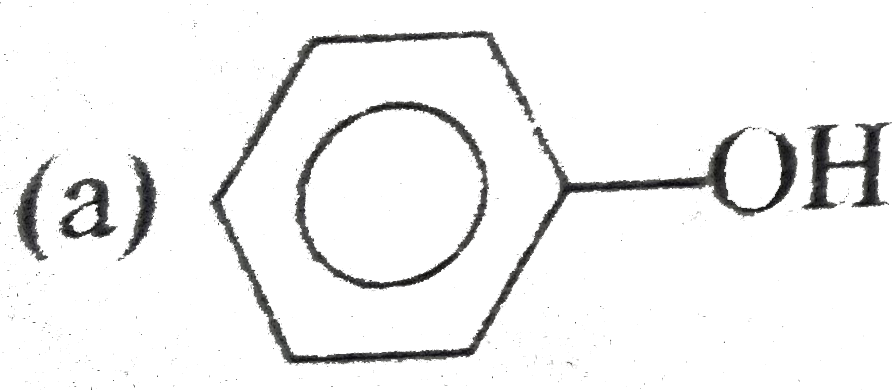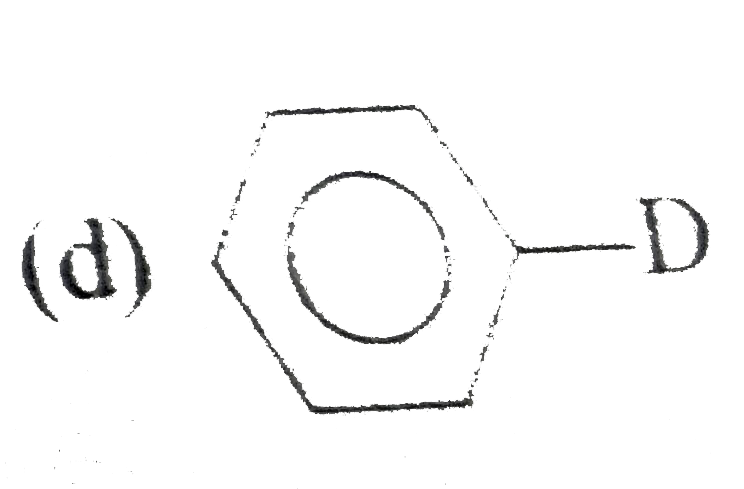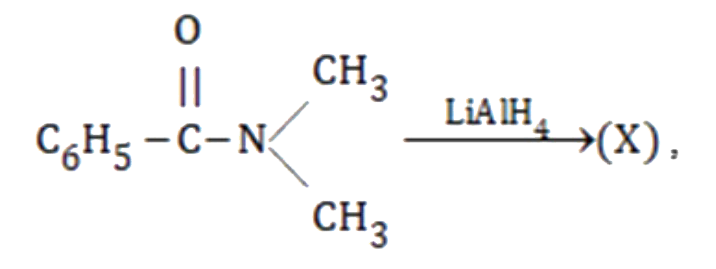In the given reaction
PhMgBr+D2O→(X),(X) will be :




The correct Answer is:D
To solve the given reaction involving Phenyl Magnesium Bromide (PhMgBr) and deuterium oxide (D₂O), we will follow these steps:
Step 1: Identify the Reactants
The reactants in the reaction are:
- Phenyl Magnesium Bromide (PhMgBr), which is a Grignard reagent.
- Deuterium oxide (D₂O), which acts as a source of deuterium (D).
Step 2: Understand the Nature of the Grignard Reagent
Phenyl Magnesium Bromide (PhMgBr) consists of a phenyl group (Ph) with a negative charge (Ph⁻) and a magnesium bromide (MgBr⁺) cation. The phenyl group is highly nucleophilic due to the negative charge.
Step 3: Reaction Mechanism
When PhMgBr reacts with D₂O, it undergoes an acid-base reaction:
- The phenyl group (Ph⁻) acts as a base and attacks the deuterium in D₂O.
- This results in the formation of phenyl deuterium (PhD) and the byproduct magnesium deuteroxide (MgBrOD).
Step 4: Write the Products
The products of the reaction can be summarized as follows:
- The phenyl group (Ph⁻) picks up a deuterium (D⁺) from D₂O, resulting in PhD.
- The remaining part of D₂O loses an OH group and combines with MgBr to form MgBrOD.
Step 5: Final Product Structure
The final product is:
- PhD (deuterated phenyl compound) and MgBrOD.
Conclusion
Thus, the final products of the reaction are PhD and MgBrOD.
Final Answer
The product (X) in the reaction PhMgBr+D₂O→(X),(X) will be PhD and MgBrOD.
---
The reactants in the reaction are:
- Phenyl Magnesium Bromide (PhMgBr), which is a Grignard reagent.
- Deuterium oxide (D₂O), which acts as a source of deuterium (D).
Phenyl Magnesium Bromide (PhMgBr) consists of a phenyl group (Ph) with a negative charge (Ph⁻) and a magnesium bromide (MgBr⁺) cation. The phenyl group is highly nucleophilic due to the negative charge.
When PhMgBr reacts with D₂O, it undergoes an acid-base reaction:
- The phenyl group (Ph⁻) acts as a base and attacks the deuterium in D₂O.
- This results in the formation of phenyl deuterium (PhD) and the byproduct magnesium deuteroxide (MgBrOD).
The products of the reaction can be summarized as follows:
- The phenyl group (Ph⁻) picks up a deuterium (D⁺) from D₂O, resulting in PhD.
- The remaining part of D₂O loses an OH group and combines with MgBr to form MgBrOD.
The final product is:
- PhD (deuterated phenyl compound) and MgBrOD.
Thus, the final products of the reaction are PhD and MgBrOD.
The product (X) in the reaction PhMgBr+D₂O→(X),(X) will be PhD and MgBrOD.
Topper's Solved these Questions
- HALIDESBOOK - HIMANSHU PANDEYCHAPTER - HALIDESEXERCISE - Level 2 (Q.26 To Q.50)
25 Videos
- HALIDESBOOK - HIMANSHU PANDEYCHAPTER - HALIDESEXERCISE - Level 2 (Q.51 To Q.75)
25 Videos
- HALIDESBOOK - HIMANSHU PANDEYCHAPTER - HALIDESEXERCISE - Level 1 (Q.26 To Q.48)
23 Videos
- GENERAL ORGANIC CHEMISTRYBOOK - HIMANSHU PANDEYCHAPTER - GENERAL ORGANIC CHEMISTRYEXERCISE - Subjective Type Problems
19 Videos
- ISOMERISMBOOK - HIMANSHU PANDEYCHAPTER - ISOMERISMEXERCISE - Subjective Type Problems
11 Videos
Similar Questions
Knowledge Check
In the given reaction CH3MgBr+D2O→(X), (X) will be
ACH4BCH3DCCH2D2DCH3OHIn the given reaction

X is :A B
B C
C D
D
In the given reaction

(X) will beA1∘ -AlcoholB2∘- AlcoholC3∘-AlcoholDOpen chain ether

 [X] will be
[X] will be [X] will be
[X] will be 


 [X] will be
[X] will be 